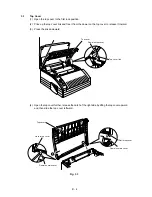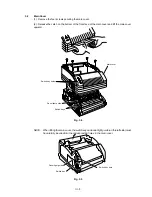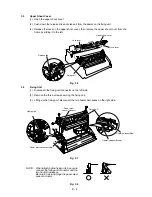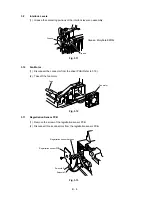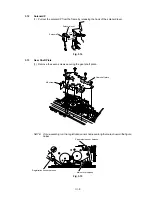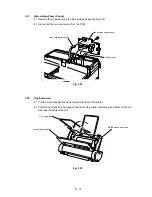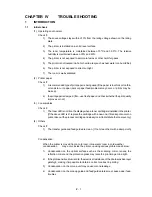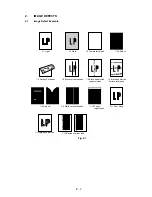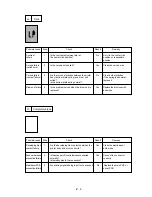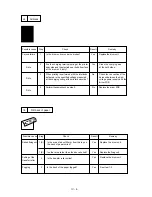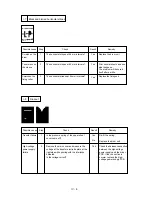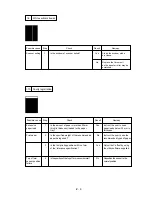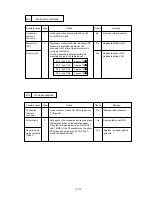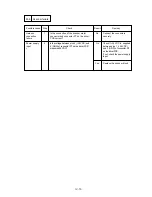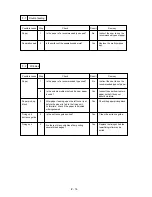
IV - 1
CHAPTER IV
TROUBLE SHOOTING
1
INTRODUCTION
1.1
Initial check
(1) Operating environment
Check if :
1)
The souce voltage stays within
±
10% from the rating voltage shown on the rating
plate.
2)
The printer is installed on a solid, level surface.
3)
The room temperature is maintained between 10
°
C and 32.5
°
C. The relative
humidity is maintained between 20% and 80%.
4)
The printer is not exposed to ammonia fumes or other harmful gases.
5)
The printer is not located in a hot or humid area (such as near water or a humidifier)
6)
The printer is not exposed to direct sunlight.
7)
The room is well-ventilated
(2) Printer paper
Check if :
1)
A recommended type of print paper is being used (if the paper is too thick or too thin,
or tends to curl, paper jams or paper feed problems may occur, or prints may be
blurred).
2)
the print paper is damped. [If so, use fresh paper, and check whether the print quality
improves or not.]
(3) Consumables
Check if :
1)
The toner LED is not lit on the display when a toner cartridge is installed in the printer.
[If the above LED is lit, replace the cartridge with a new one. If blank spots occur on
prints, take out the process cartridge and slowly rock it to distribute the toner evenly.]
(4) Others
Check if :
1)
The transfer guide and feed guide are clean. [ If not, clean them with a damp cloth.]
Condensation:
When the printer is moved from a cold room into a warm room in cold weather,
condensation
may occur inside the printer, causing various problems as below:
1)
Condensation on the optical surface such as the scanning mirror, lenses, the
reflection mirror and the protection glass may raise the print image to be light.
2)
If the pfotosensitive drum is cold, the electrical resistance of the photosensitive layer
getshigh, making it impossible to obtain a correct contrast in printing.
3)
Condensation on the corona unit may cause corona leakage.
4)
Condensation on the pick-up guide and feed guide plates may cause paper feed
troubles .

